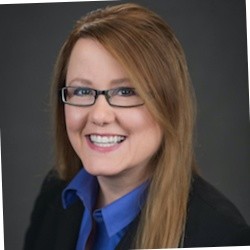A tiny woman conveys a big message about fitness
“I know you. Where have we met before?” Carol Collins asked me as I approached. A National Senior Games medal ceremony had just concluded, and the 92-year-old Houston resident was sporting the gold for the 5K cycling time trial for women in her age category, 90 to 94. She had completed the event in 15:26, according to family.
She tells me she had won the 10K women’s cycling time trial in her age group the day before (in 38:08), whispering with a smile that she was the only woman in her age range who participated in these events, as if that fact somehow diminishes the accomplishments. A few days later, she would go on to participate in—and win—her age category for women in the 20K road race with a time of 1:03:52.
Carol and I hadn’t met before, although she brought to my mind my late mother-in-law, also a tiny, sweet, outgoing woman (I never had seen her wearing a form-fitting cycling outfit, however). I wish we had met before; perhaps that would have meant that I had had the opportunity to follow her around the country as she participated in similar athletic events. What an inspiration she and the other National Senior Games participants, aged 50+ years, were. (You can see Carol and some of the other athletes in the accompanying photos.)
The event brought more than 10,000 athletes to the Cleveland area July 19 to Aug. 1 to compete in 19 sports, according to event organizers. I met Carol on July 25, a gorgeous day in Northeast Ohio. Sunshine, blue skies, temperatures in the low 70s—the kind of day that makes one (at least this one) especially glad to be alive.
Carol and her fellow competitors are doing everything they can not only to stay alive but also to stay active. Unfortunately, they are in the minority: Only about 20 percent of all adults currently obtain enough physical activity to reap substantial health rewards, according to the Centers for Disease Control and Prevention (CDC).
According to the CDC, adults aged at least 65 years need muscle-strengthening activities two or more days a week plus one of the following every week, at minimum:
- 2.5 hours of moderate-intensity aerobic exercise, such as brisk walking;
- 1.25 hours of vigorous-intensity aerobic activity, such as jogging or running; or
- an equivalent mix of moderate- and vigorous-intensity aerobic activity.
Carol already is looking forward to returning to the Midwest of her earlier years to participate in the 2015 National Senior Games. She is a former resident of North and South Dakota, and the games will be held in neighboring Minnesota.
Of course, seniors have varying abilities and desires when it comes to physical strength and stamina. My new friend inspired me to think about my own habits. I hope I'm still relatively healthy and exercising when I become a senior—and I certainly want to take steps to try to reach Carol's age. Even if you aren’t helping anyone train for an event such as the National Senior Games, what strategies are you using to ensure that the seniors in your care obtain the kind and amount of exercise they are capable of, to maintain or improve their health?
To read about what some seniors look for in exercising facilities and how some retirement communities are helping them remain active, see my article about another time trial athlete; you’ll find links to Long-Term Living’s other coverage of the National Senior Games here as well.
Click the photo above to view the photo gallery.
Access all blogs by this author.

Lois A. Bowers was senior editor of I Advance Senior Care / Long-Term Living from 2013-2015.
Related Articles
Topics: Activities , Executive Leadership











